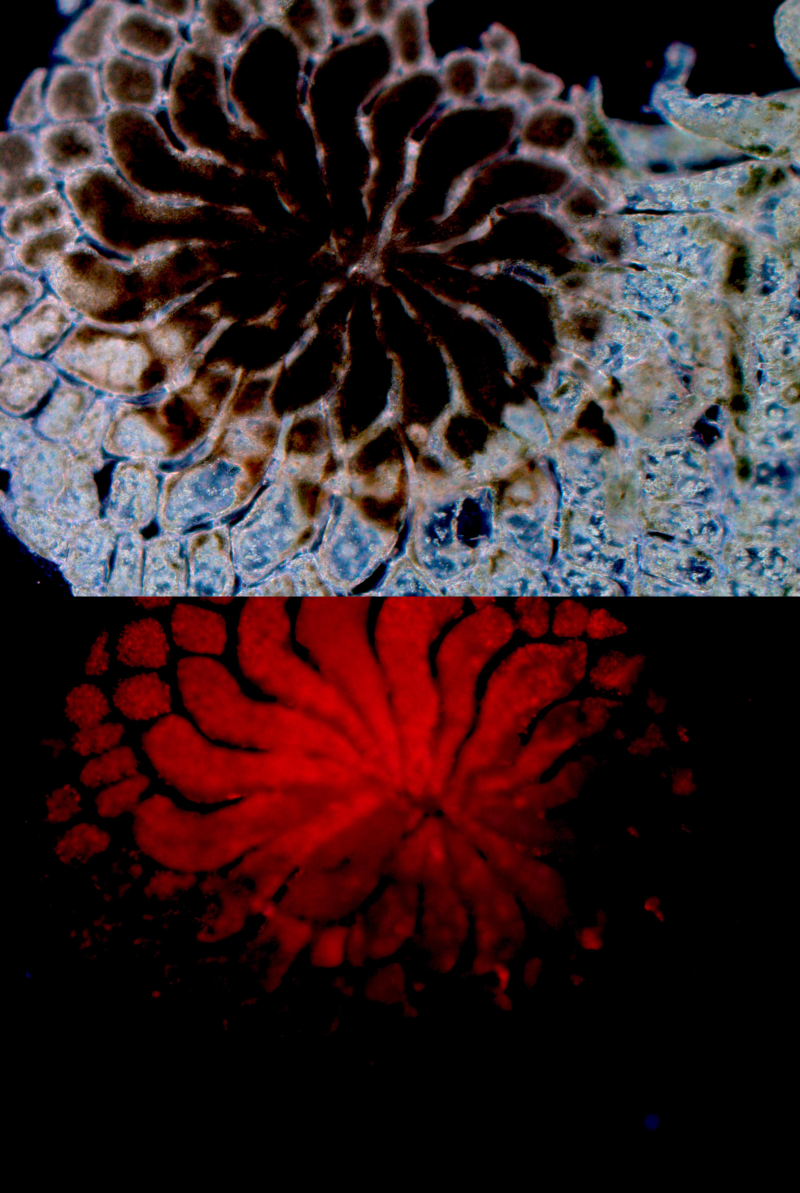Benthic Foraminifera
Type of resources
Topics
Keywords
Contact for the resource
Provided by
Representation types
status
-

This dataset measures 5 effects of temperature and pH stressors (individual and combined) on tropical Foraminifera. The effects measured are: respiration, survivorship, growth, chl-a content and photochemistry. The study was conducted in 2011 and the data is provided as 5 single sheet spreadsheets. Warming and changes in ocean carbonate chemistry alter marine coastal ecosystems at an accelerating pace. Here we investigate the individual effects as well as the interaction of two stressors, temperature and pH on two species of benthic coral reef Foraminifera. This study consisted of a 7 week aquarium experiment manipulating temperature and pH changes and measuring survivorship, growth, photosynthesis, respiration and chl-a content in these benthic coral reef Foraminifera. Method: Specimens were collected from Orpheus Island in the central Great Barrier Reef in September 2011. H. depressa was collected at a depth of 8–12 m from coral rubble at Cattle Bay (18°34’08’’ S 146°28’55’’ E) and M. vertebralis at a depth of 0–1 m (below Lowest Astronomical Tide) from turf algae-covered rocks at Hazard Bay (18°38’58’’ S 146°29’11’’ E). Both species were acclimated to laboratory conditions in tanks with moderate flow-through conditions (same as used in experimental setup) under low-light conditions (10 µmol photons m-2 s-1) for a period of 3 weeks. 12 flow-through aquaria (working volume 17.5 L) were installed in a constant temperature room, and the experiment was carried out over a period of 53 d. Specimens were kept inside custom made flow-through housings in each aquarium to achieve higher flow conditions more closely mimicking their habitat than in previous experiments. Flow-through housings contained two levels made from two standard 6-well cell culturing plates with flow-through lids. Twenty-four specimens (four specimens per well) of H. depressa were put in the lower level and the same number of M. vertebralis in the top level. For each temperature (28 and 31 ºC) and pCO2 level (~790 µatm, pHNIST 7.9 and ~490 µatm, pHNIST 8.1), three replicate tanks were used; replicate tanks were randomly allocated to treatments. Seawater was pumped from the ocean into the laboratory, filtered to 5 µm, and stored in four header tanks where it was modified to the desired experimental conditions. Manual temperature and pH measurements were performed once to twice per day. Water samples for total alkalinity (AT) and dissolved inorganic carbon (DIC) determinations were taken weekly and analysed by AIMS Laboratory Services. Flow rates into the individual wells were recorded before and after the experiment, ranging between 180 and 220 mL min-1. Velocity of the water flow varied from 4.2–5.2 9 10-1 m s-1 at the inlet (Ø 0.3 cm) to 3.1–3.8 9 10-3 m s-1 at the outlet (Ø 3.5 cm). The flow rates between inlet and outlet are in the same range as those measured in situ over dead coral rubble and sea grass. Flow-through housings were made containing two levels so that one species could be kept in the top level exposed to higher light levels than the species in the lower level. Light levels were chosen for each species separately because of their known distributions and different light saturation points determined by pulse amplitude modulation (PAM) fluorometry. PAM fluorometry results for M. vertebralis indicated a maximum saturating irradiance (Ek) between 100 and 140 µmol photons m-2 s-1 and for H. depressa between 40 and 60 µmol photons m-2 s-1 (Ziegler and Uthicke 2011). The light levels used in the experiment were chosen to fall below the Ek values by Ziegler and Uthicke (2011) and P–I curve Pmax values determined by Vogel and Uthicke (2012) and were selected to correspond to levels which have shown no changes in mortality rates or chlorophyll a concentrations in previous experimental manipulations of the studied species. Further detail can be found in this publication: Schmidt, C., Kucera, M., & Uthicke, S. (2014). Combined effects of warming and ocean acidification on coral reef Foraminifera Marginopora vertebralis and Heterostegina depressa. Coral Reefs, 33(3), 805-818. DOI 10.1007/s00338-014-1151-4 Format: 5 text (csv) files are given, one for each measurement. The 5 tables are listed below where: Species: H=Heterostegina, M=Marginopora Temperature: °C Treatment: abbr. of Temp°C, and pH 1.) Foraminifera_survivorship.csv Tank, Species, Real Temp (°C), Real pH, Treatment 2.) Foraminifera_PAM_data.csv Tank, Well, MQY (Maximum Quantum Yield, Fv:Fm), EQY (Effective Quantum Yield), Ps (Apparent Photosynthetic Rate), Treatment, Species 3.) Foraminfera_Respiration_data.csv Respiration [µg O2 h-1 mg-1], Production [µg O2 h-1 mg-1], Net production, Tank, Species, Absolute Respiration (Respiration given as positive), Treatment 4.) Foraminifera_growth.csv Aquaria Number, Well, Area Inital (mm2), Area Final (mm2), Growth (%/day), Treatment, Real Temp, Real pH, Species (Averages given per Well in Marginopora, individual sizes per well in Heterostegina) 5.) Foraminifera_chla content-csv Treatment, Chl a (µg pigment/ mg wet weight of the Foraminifera), Tank, Species
 eAtlas Data Catalogue
eAtlas Data Catalogue